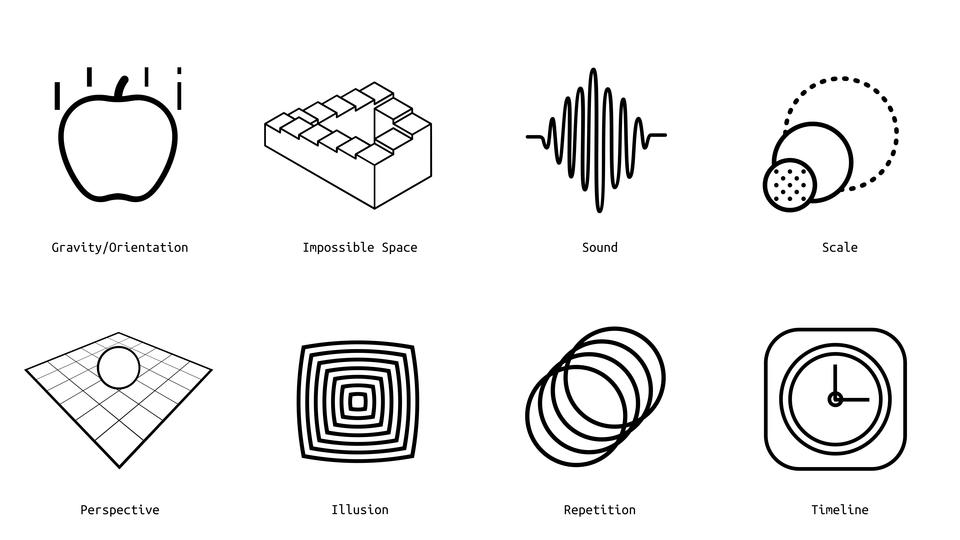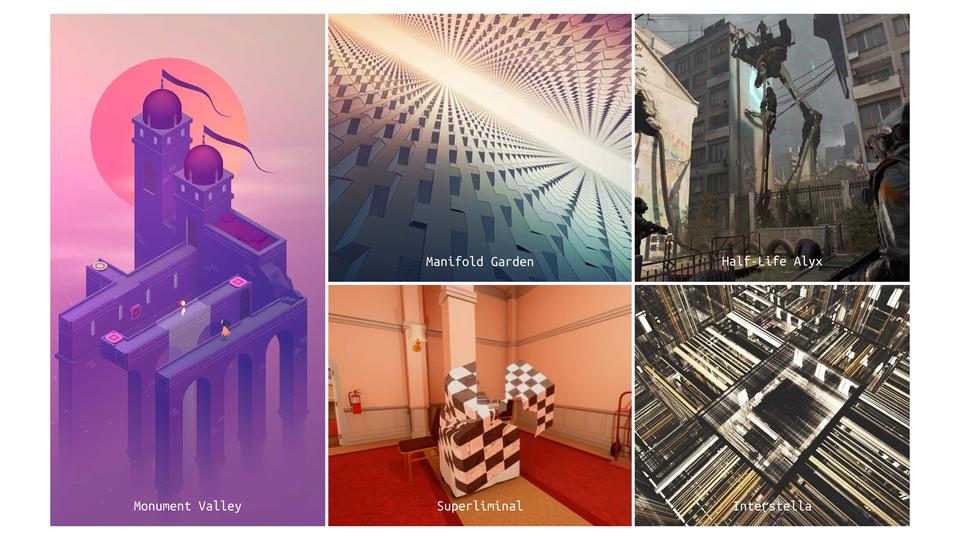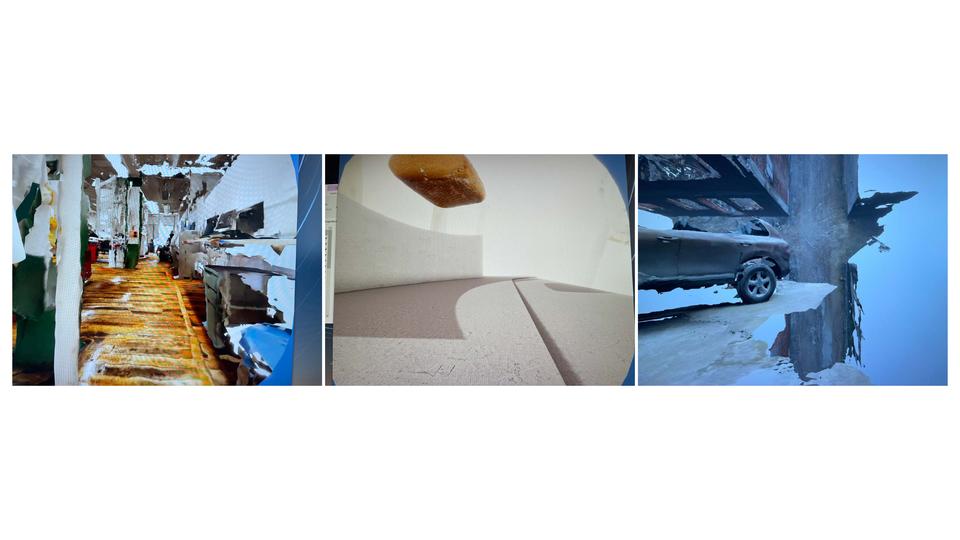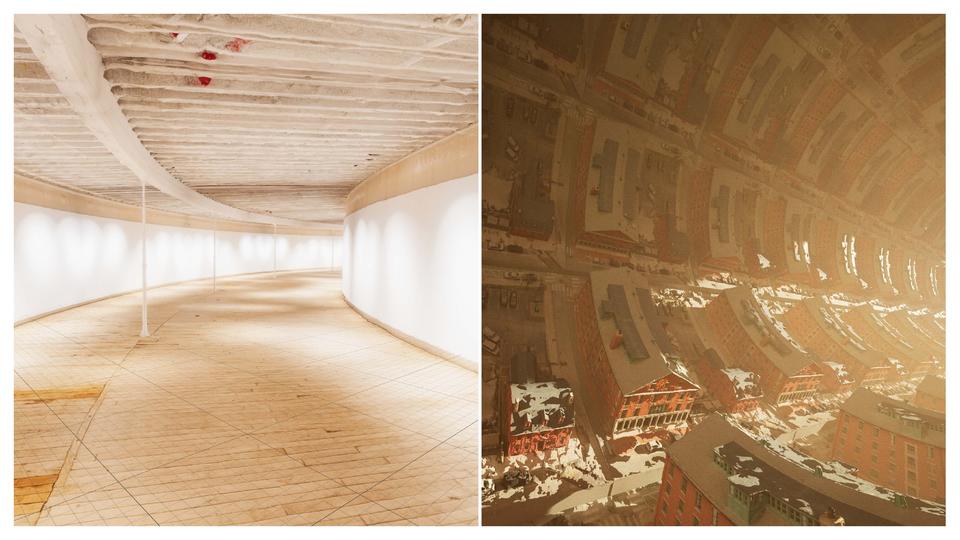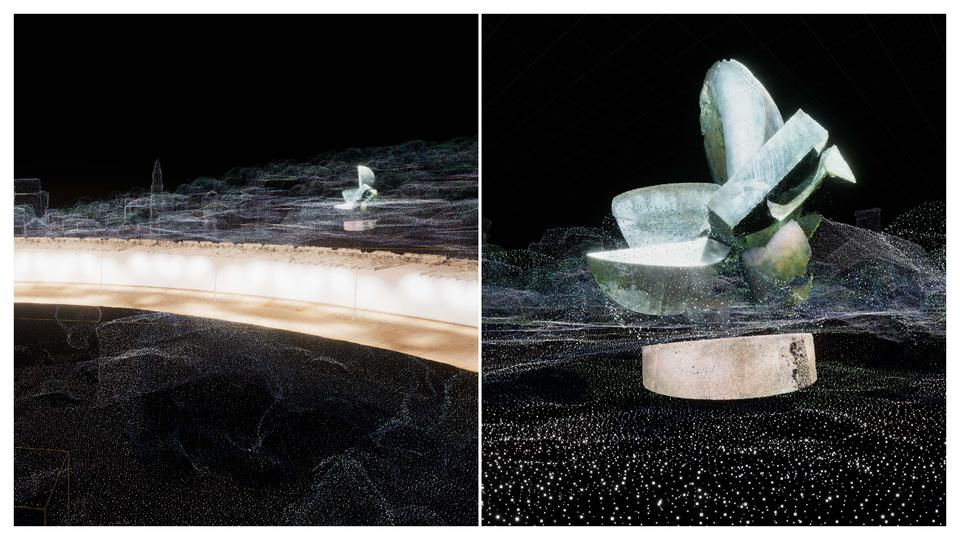Kaijie Huang
towards new immersion
The rapid development of informational technologies and computational technologies in the past few decades had made previously expensive computational devices affordable for the general public. Personal computers in the 1990s and 2000s, Smartphones in the 2010s, and Virtual Reality (VR) headsets especially in recent years(2020s). The extraordinary immersive qualities of VR had sparked a new wave of exploration of this newly developed media.
The immersive medium has a long history in human society even before the invention of computers. It can take as many forms as literature, drama, painting, sculpture, photography, film, digital media and so much more. Depending on the different levels of immersion qualities of those mediums, human perception of realness toward those mediums can vary. Among all the human perceptions visual perception is the richest and was given large weight in the development of immersive mediums. From painting to photography, from photography to filmmaking, A clear trend of moving to more immersive media unfolds as we examine these histories.
This trend of moving to a more immersive visual also generates new possibilities of expressions. Photography and film were initially used majorly as recording visual media but were given more weight of artistic expression as it developed. Computational and VR headsets devices were born to fulfill simulation, training, and calculation needs, but then entertainment and artistic elements came into play.
All these ever-evolving forms of immersive media were only made affordable for the general public by multiple technological and production improvements--which had been proved possible during the past few decades and were expected to continue in the next few decades. Although VR headsets a decade ago were expensive and low in performance, current commercialized VR headsets at an affordable price like Oculus Quest can provide a pretty good immersive experience already.
As VR content getting more prevalent and easier to access, applications of VR content are becoming more diverse as well. However, most of the content today are focusing on recreating or simulating 3-dimensional experiences. But what if we reimagine the VR experience? Are there other possibilities other than spatial representation and simulation? What can be possible with some of the limitations removed as continuous tech improvements in the foreseeable future? What social construct and possibilities can this new immersive technology bring us?
Image
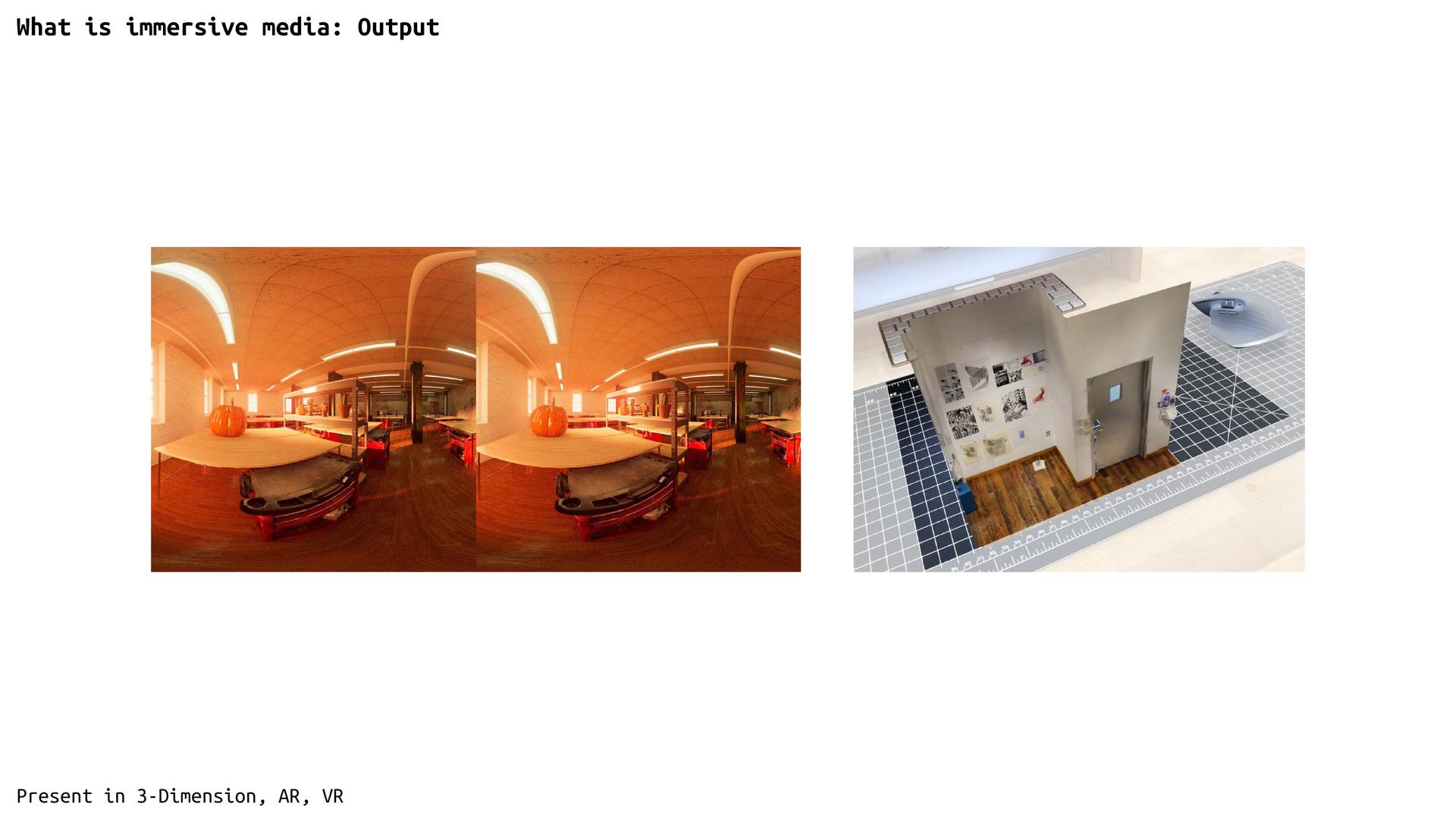
What is immersive media?
Digital renderings
2022
Image
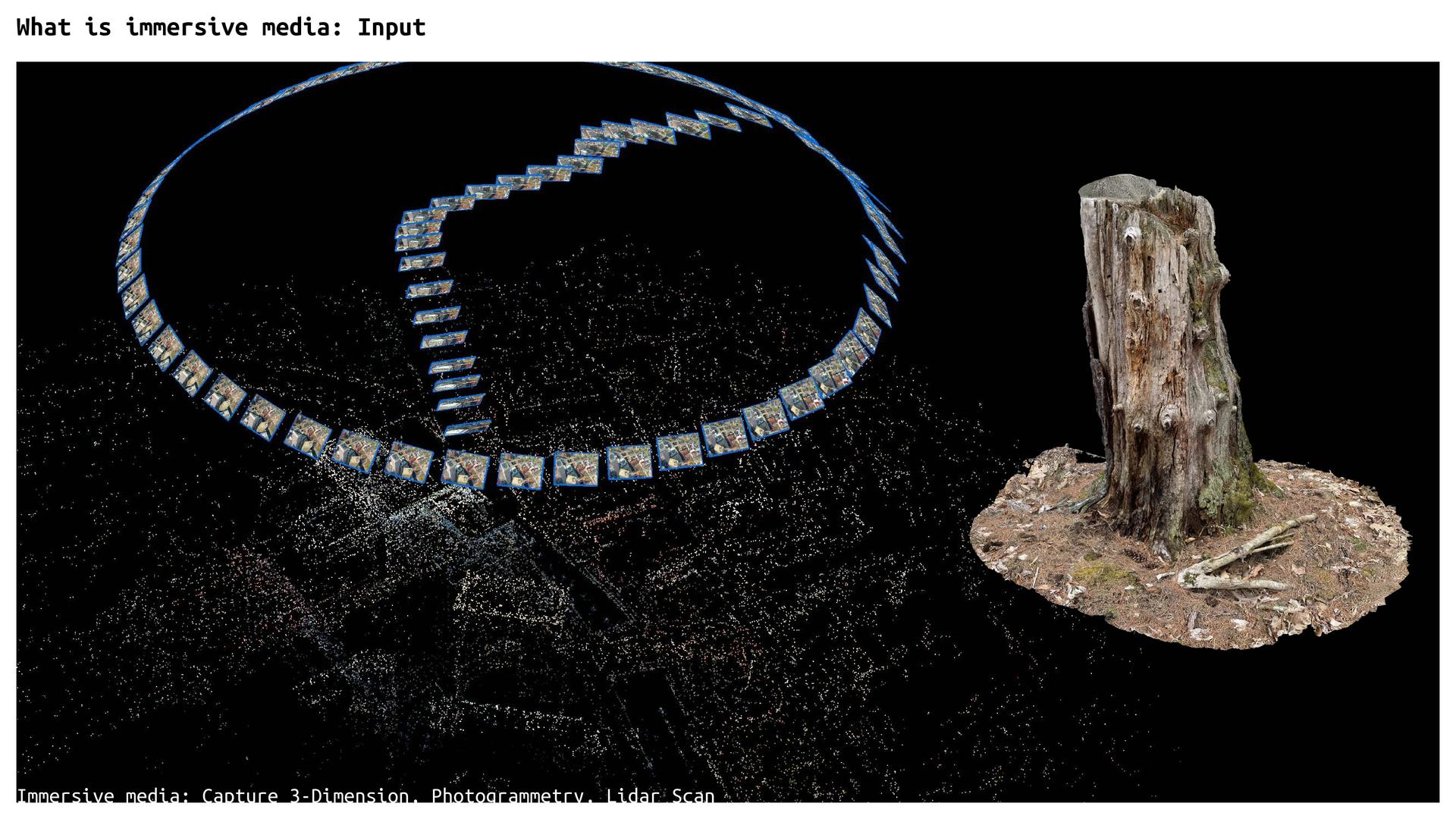
What is immersive media?
Digital rendering
2022
Image
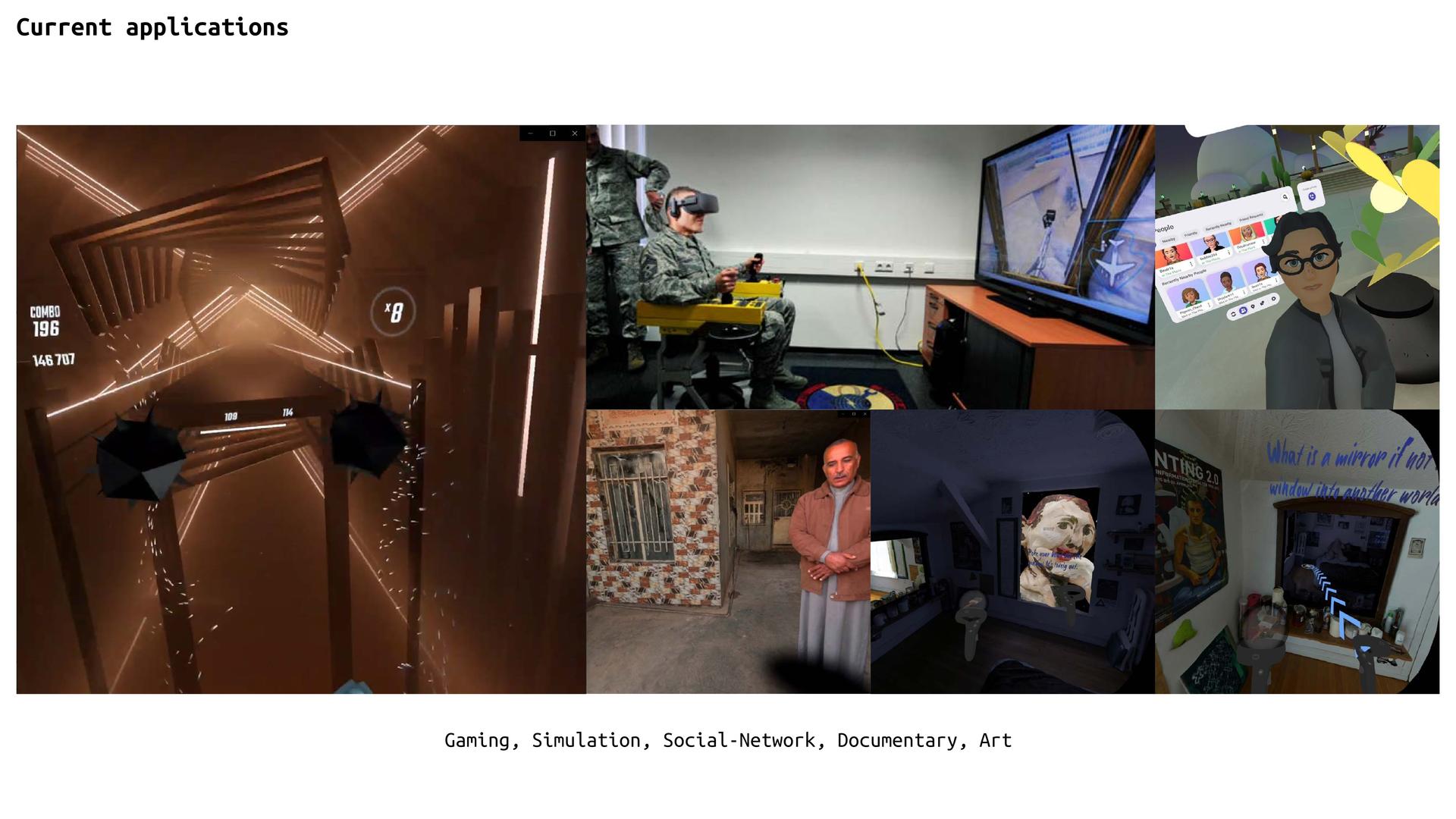
Current applications of immersive media
Digital captures
2022
Image
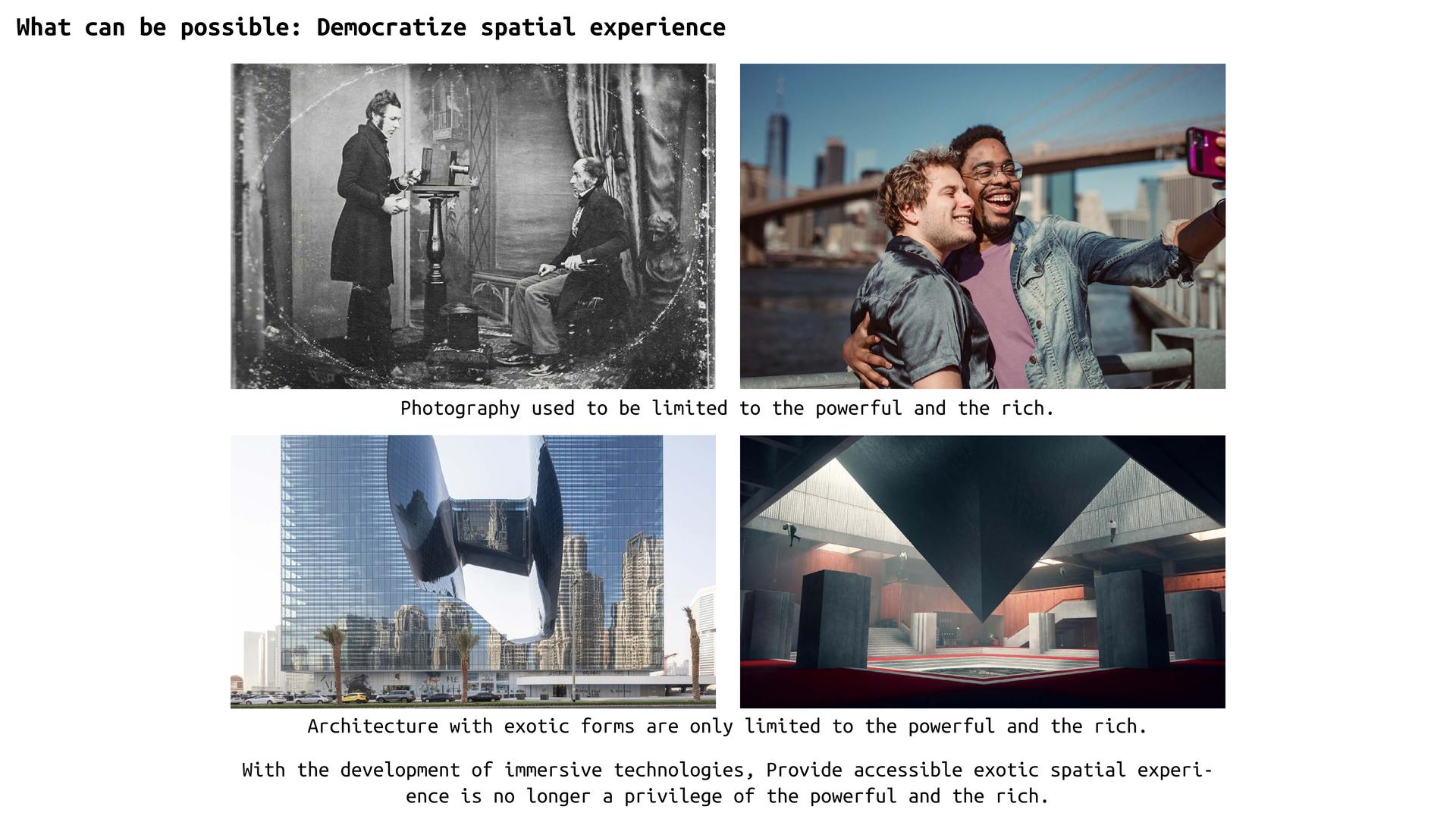
What can be possible: Democratize spatial experience
Slides
2022
Image
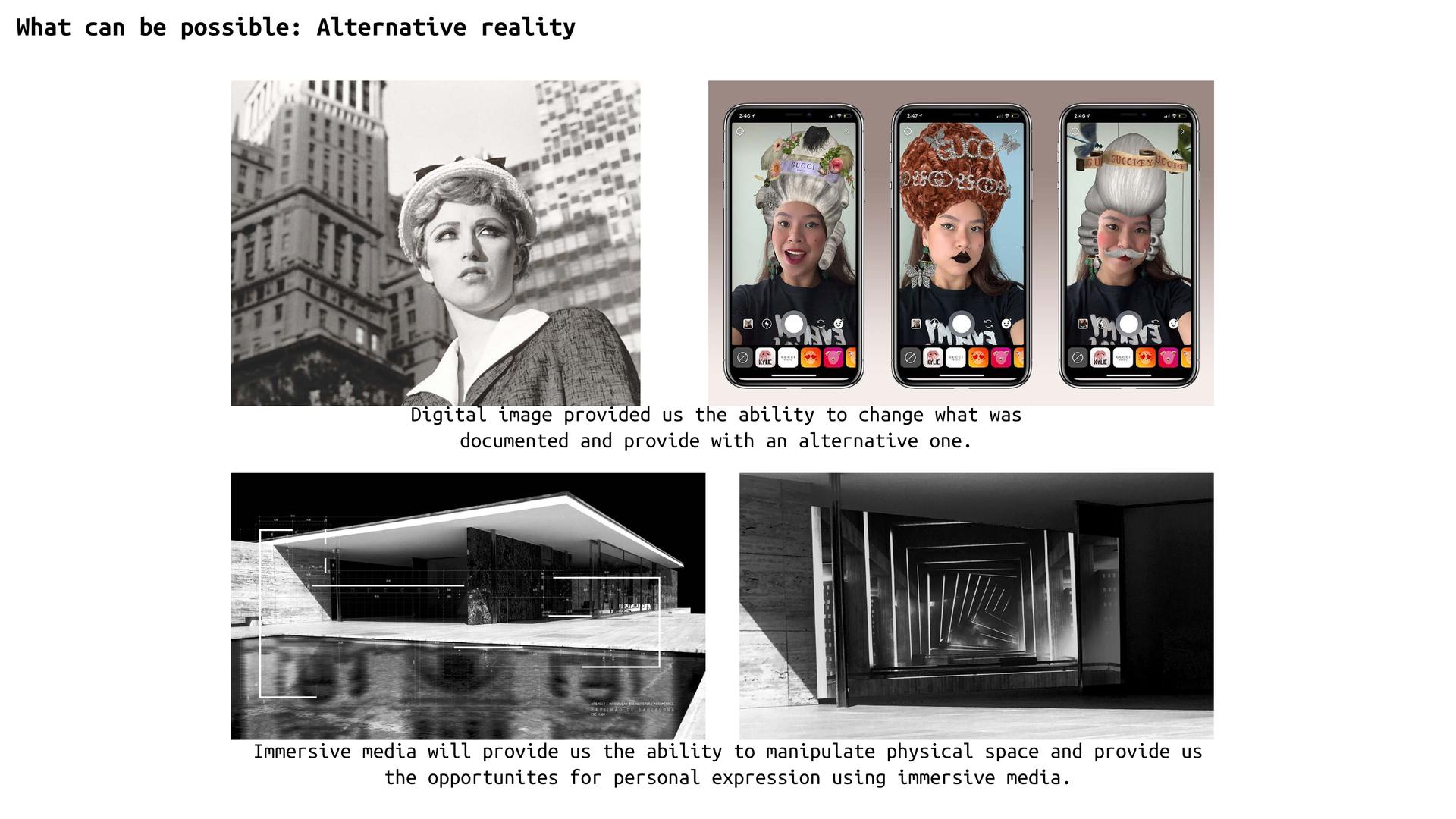
What can be possible: Alternative reality
Slides
2022
- Architecture
- Ceramics
- Design Engineering
- Digital + Media
- Furniture Design
- Global Arts and Cultures
- Glass
- Graphic Design
- Industrial Design
- Interior Architecture
- Jewelry + Metalsmithing
- Landscape Architecture
- Nature-Culture-Sustainability Studies
- Painting
- Photography
- Printmaking
- Sculpture
- TLAD
- Textiles
